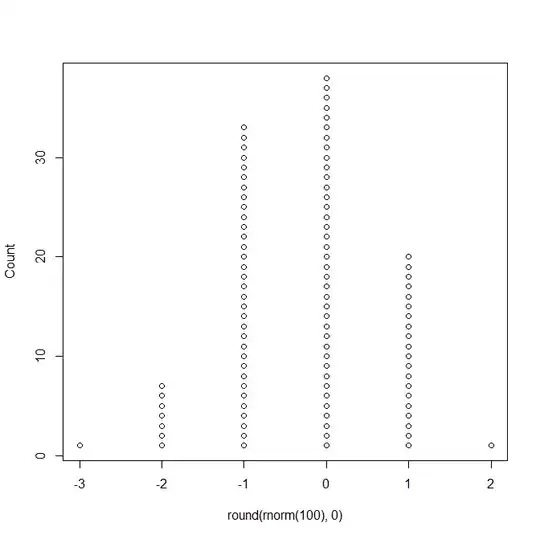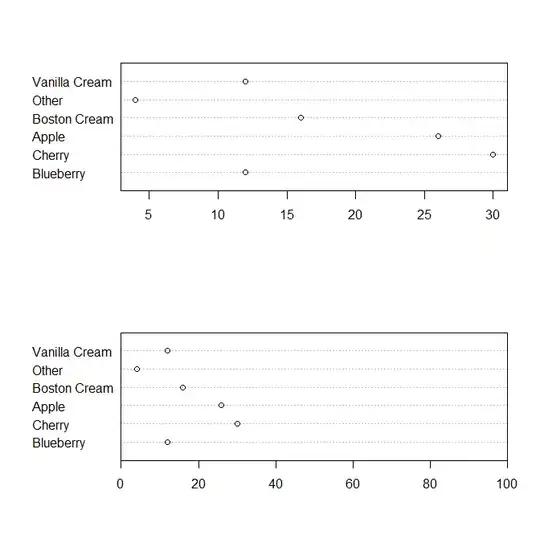I understand the critiques of pie charts as referenced here: Problems with pie charts
However, the above response (and the R manual) always cite dot plots from Cleveland as an alternative. My question is why are dot plots considered an alternative? It seems to be that dot plots only apply when:
the data set is relatively small (so that you can perhaps even by eye count dots in the plot, each dot corresponding to a data point, and
they are not intended to display percentages / density estimates of data.
It seems to me like the main goal of the pie chart is (even if it does so badly) to highlight the fact that the categories must sum to 1 or 100%. with the dot plots you can show the cardinal value of each category, but it will not be obvious what fraction of all the categories a particular value is. Also, with a pie chart it doesn't matter if you have 10 data points or 1,000,000, where as a dot plot with a million points (even if the number of categories is small) seems odd and might just collapse to a bar graph.
Could someone explain why dots plots are seen as an alternative and maybe provide a few examples of dot plots to other quantitative alternatives to pie charts (like bar plots?)


